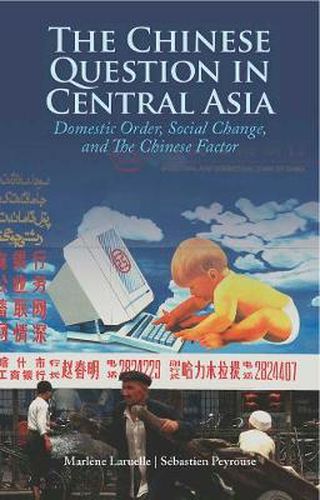Readings Newsletter
Become a Readings Member to make your shopping experience even easier.
Sign in or sign up for free!
You’re not far away from qualifying for FREE standard shipping within Australia
You’ve qualified for FREE standard shipping within Australia
The cart is loading…






Since the start of the 2000s, the People’s Republic of China has become an increasingly important player on the Central Asian scene, both diplomatically and strategically, in particular through the Shanghai Cooperation Organization. At the economic level, China has positioned itself among the largest traders and investors in Kazakhstan, Kyrgyzstan, Uzbekistan, Tajikistan, and Turkmenistan. This growing Chinese presence has drastically challenged the traditional influence of Russia and weakened that of the United States and Europe. The purpose of this book is to go beyond a geopolitical analysis by articulating an external influential factor, namely China, and changes in the domestic order in neighboring Central Asia. It engages in an analysis of the contemporary transformations that are occurring within the systems and societies of Central Asia. China has become a subject of public debate, academic and expert knowledge. New cultural mediators, petty traders, lobby groups, migrants, and diasporas, have also emerged. China’s rise to power has worked as a catalyst compound of the anxieties and phobias associated with the major social transformations that have occurred in Central Asia over the last two decades. Sinophobia and Sinophilia are now closely associated.
$9.00 standard shipping within Australia
FREE standard shipping within Australia for orders over $100.00
Express & International shipping calculated at checkout
Since the start of the 2000s, the People’s Republic of China has become an increasingly important player on the Central Asian scene, both diplomatically and strategically, in particular through the Shanghai Cooperation Organization. At the economic level, China has positioned itself among the largest traders and investors in Kazakhstan, Kyrgyzstan, Uzbekistan, Tajikistan, and Turkmenistan. This growing Chinese presence has drastically challenged the traditional influence of Russia and weakened that of the United States and Europe. The purpose of this book is to go beyond a geopolitical analysis by articulating an external influential factor, namely China, and changes in the domestic order in neighboring Central Asia. It engages in an analysis of the contemporary transformations that are occurring within the systems and societies of Central Asia. China has become a subject of public debate, academic and expert knowledge. New cultural mediators, petty traders, lobby groups, migrants, and diasporas, have also emerged. China’s rise to power has worked as a catalyst compound of the anxieties and phobias associated with the major social transformations that have occurred in Central Asia over the last two decades. Sinophobia and Sinophilia are now closely associated.